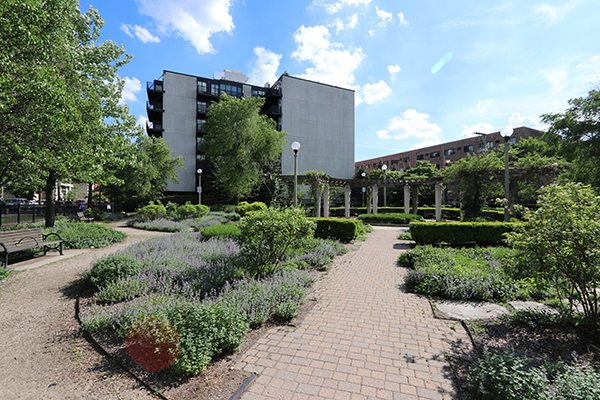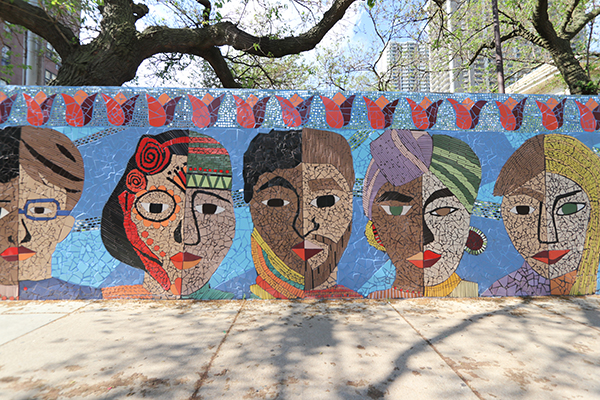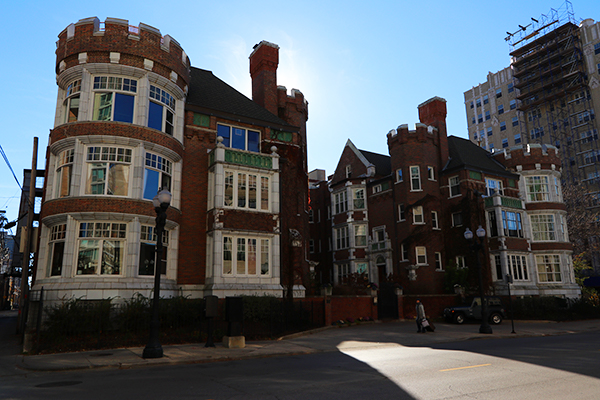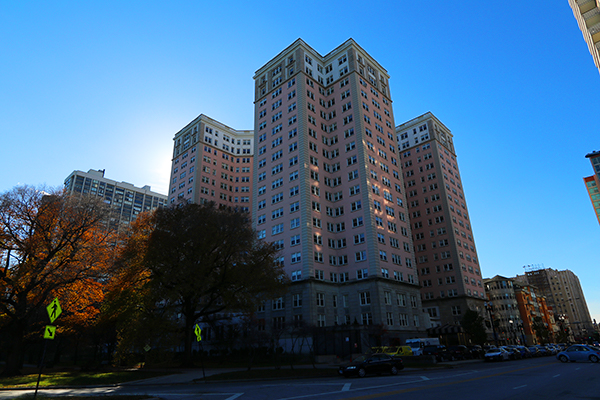Edgewater is a historic beachside neighborhood known for its diversity, affordability, and down-to-earth attitude.
Located 7 miles north of the Loop, Edgewater is for the unpretentious and curious of heart. Residents love their neighborhood’s great parks and beaches, charming homes, and easy access to downtown (and beyond) via the CTA Red Line and Lake Shore Drive.
Edgewater Neighborhood Guide
Edgewater offers it’s residents a distinctive, low-key charm. From cozy coffee shops to great local theater, Edgewater residents have plenty to enjoy.
Edgewater Food and Drink
Broadway Avenue is the neighborhood’s main commercial corridor. Both sides of the street are lined with delicious eats including the renowned Ethiopian Diamond, homemade custard at Lickity Split, and one of the best burgers in the City at Moody’s Tavern.
The north side of Chicago is known for its coffee shops and neighborhood bars. Edgewater is no exception. Metropolis Coffee is a hub for local Loyola students, local creatives, and anyone seeking one of the best cups around. Looking to meet your new neighbors? Cunneen’s Bar is a friendly neighborhood tavern.

What’s Nearby?
Edgewater is home to a vibrant theater scene, featuring a number of small, but prestigious companies. The Raven Theater, established in 1983, is known for its stellar renditions of mid-to-late 20th-century plays. The Steep Theater is a more recent addition to the community, known for its elaborate staging. For live music, Uncommon Ground hosts local and touring musicians in its intimate listening room.
Looking for more excitement? The Red Line runs straight to the Loop, with all of the attractions that make Chicago a tourist destination the world over, including the Magnificent Mile, Museum Campus, and much more.
Parks and Recreation
In the summer, the neighborhood is a genuine beach town, with some of Chicago’s best beaches. At the neighborhood’s southern edge, Foster Beach offers bike rentals, tennis/basketball courts, and a tasty concession area. Hollywood Beach offers full amenities and a long-running “Movies in the Park” schedule in the summers.

The neighborhood has top recreation options all year round. The Berger Park Cultural Center offers a variety of cultural and arts programming for all ages. A unique community asset is the Broadway Armory Park, the Chicago Park District’s largest indoor recreational facility. Formerly home to the National Guard, the center has 5 gyms and is home to gymnastics programming, adult sports leagues, and a great after-school program. And of course, the northern tip of Lincoln Park intersects with Edgewater, giving residents access to miles of lakefront trails, manicured fields, and much more.
Small Town Vibes
In the summer, it’s no rare occurrence to stumble upon a local street fest, and nearly every block in the community comes together to throw a block party. So, when people talk about Chicago’s “small-town feel” — they might as well be talking about Edgewater!
Edgewater History
Early Settlement

Until the late 18th century, the area was dominated by dense woods dotted with orchards operated by German and Irish immigrants. Seeing possibility in Chicago’s exploding population, developers bought up much of the land. John Lewis Cochran headed the project and gave the neighborhood its name in 1885.
With a plan to attract affluent Chicagoans, Cochran built mansions along the lake, negotiated the extension of the CTA Red Line to Howard, and provided the area with street lights and lamps. In less than a decade, Edgewater went from woods to one of the first electric suburbs in the country. The neighborhood was annexed to Chicago in 1889.
Swinging 1920s and 1950s Decline
Cochran’s gambit was a brilliant success; by the 1920s, Edgewater was regarded as one of the most prestigious communities in Chicago and a building boom was well underway. Mansions lined the lake and single-family homes had spread west all the way to Clark Street. Stylish apartment complexes were built north of Granville, including Chicago landmark the Edgewater Beach Apartments (known to most as the “pink building at the end of Lake Shore Drive”). This area, known today as the Bryn Mawr Historic District, was a favorite of stars such as Marilyn Monroe and Frank Sinatra.
Edgewater began to decline in the 1950s as many left for the Northern Suburbs, leaving some buildings empty and many mansions converted into multi-unit buildings.

Edgewater Today
A resurgence began in the 1970s as high-rise condos were built along the lake, slowly replacing the mansions. In the 1980s, Chicago’s City Council helped many new businesses to be established. Furthering the revival, Loyola University, long a Rogers Park partisan, began to encourage students and faculty to embrace Edgewater. Today, Edgewater’s rich blend of peoples, cultures, and businesses contributes to its vibrancy and welcoming spirit.
Edgewater Homes
Edgewater is a neighborhood of neighborhoods, walk a few blocks and the architecture and vibe can change dramatically. Fortunately, all these pockets have character and charm.
Along the northernmost stretch of Clark Street, Andersonville is known for its local boutiques and hip eateries. The Bryn Mawr Historic District is home to much of the neighborhood’s gorgeous early 20th-century architecture. Edgewater Glen, in the northern part of the area, is known for its charming single-family homes and tight community. Luxury high-rises line both sides of Sheridan Avenue offering pristine views of the lake and easy access to local beaches and Lincoln Park.
The neighborhood offers a huge variety of housing options, ranging from lakefront high-rises and condos to vintage two and three-flats, greystones, and vintage and newly-built single-family homes. With bustling business corridors, beautiful beaches, and easy access to the Loop, Edgewater is a great place to call home!




